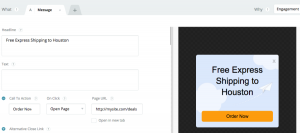— October 17, 2018

geralt / Pixabay
A lot of confusion with resume writing – and especially formatting – centers on dates. How far should you go back? Do you include months and years or just years? Should dates go on the left or right side? What about completion dates for degrees or certifications? The list goes on and on. It’s tough to know exactly what you should or shouldn’t include and where it should go, so we’ve provided some helpful tips:
Showing Job History
A general rule of thumb is to elaborate on the last 10 to 15 years of work experience. Anything beyond that can be summed up under “additional professional experience” or left off. An employer realizes that if your resume starts with a role as senior manager or director, likely you didn’t jump right into that position as new grad. However, you should always list all of the jobs you have held when filling out online applications.
Months or No Months?
Listing simply the years for employment makes for a much cleaner layout because all of the dates are four digits and line up nicely. Plus, it makes it easy to skim and see the progression. It also downplays any small gaps in employment by drawing attention to the rest of the content rather than the dates.
Where to Place Dates
A common practice is to align dates to the right side of the resume. If you put them on the left in front of companies or job titles, it puts more emphasis on the time you were there rather than where you worked or the role you held. The eyes naturally track left to right, so once an employer sees where you’ve been, they can see how long you were there.
Detailing Education
This is another tricky area. Should you list what year you graduated with your degree or completed a certification? It depends. If it was more than 5 or so years ago and you have relevant job experience since that time, it’s generally okay to leave it off. If you’re a new graduate or recently completed additional training, you may want to include the year so the employer can see that it is something new. This can provide some context for why you don’t have a lot of experience or roles applying these skills yet.
Omitting Employment Dates
If you’re an older employee or have several gaps in employment, it can be tempting to leave dates off altogether. This can be a risky move. It typically sends up a red flag that there is something you’re trying to hide. If there wasn’t, there would be no reason not to have dates. Also, be wary about leaving your current role as “year – Present” if you’ve recently been terminated, laid off, retired, resigned, or quit. Be honest and include an end date because if you say you still work there and a potential employer calls to check and finds out you don’t, you’re going to be caught in a lie. That can a serious problem and bring your credibility into question.
Business & Finance Articles on Business 2 Community
(50)
Report Post


